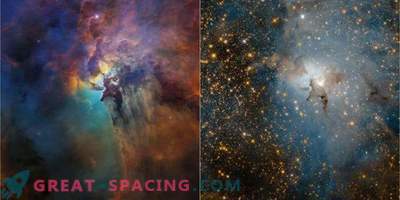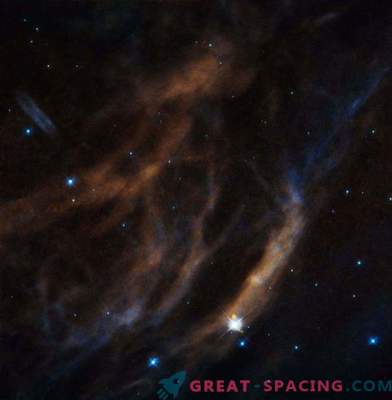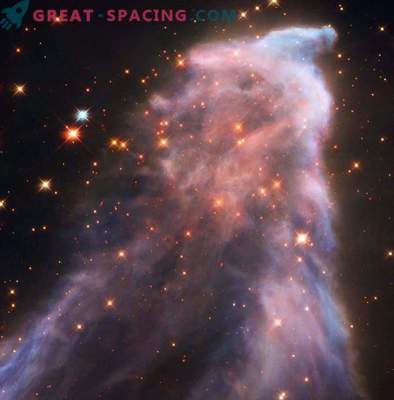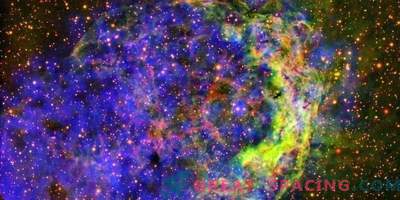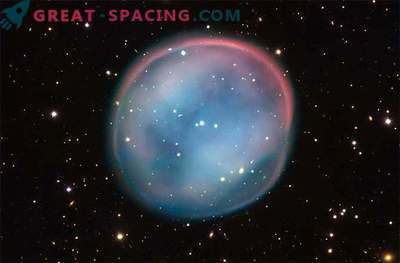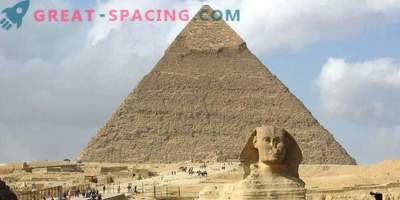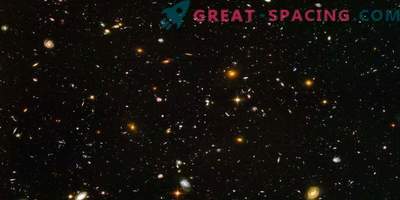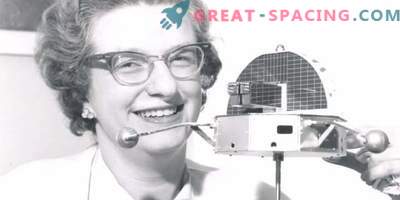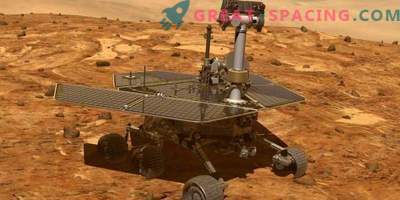
To celebrate your 26th year in space - yes, twenty-six years! - Hubble felt the spirit of the birthday and filmed a stunning portrait called “The Bubble Nebula”.
This nebula lies about 8,000 light-years from Earth in the constellation Cassiopeia. Although the Hubble Space Telescope observed this rainbow object before, it is so large that we usually saw close-ups of only one of its sections. However, this time, 4 separate shots taken with the Hubble 3 wide-angle camera (WFC3) were stitched together like a mosaic, capturing completely separate bubbles for the first time.
At first glance, you can assume that the Bubble Nebula is a consequence of some kind of star eruption; possibly a supernova remnant. But the bubble engine is actually a star that generates powerful stellar winds, producing an almost perfect bubble that looks right out of the jacuzzi.
The star, called SAO 20575, can be seen to the left of the center of the bubble. This is a massive star, about 10 to 20 times the mass of our Sun. The star is located inside a molecular cloud of gas and dust, similar to the one in which young stars are born. But in the case of SAO 20575, its powerful stellar winds erupt through molecular clouds, pushing out the surrounding cloud, creating a bright bubbly appearance. The size of the Bubble is about 10 light years — more than twice the distance from the Sun to the neighboring Alpha Centauri star system — and the stellar winds travel at a speed of about 100,000 kilometers per hour. This Bubble is of epic proportions, and it continues to expand, driven by a fierce stellar hurricane that tirelessly creates ripples in molecular clouds.
It is interesting to note that Hubble’s previous observations showed close-up small beams of gas and dust in the middle of this ruthless wind, with a mass on the order of the Earth’s mass, but with elegant tails directed backwards.
26 years after the launch of NASA's Discovery onboard the space shuttle on April 24, 1990, Hubble continues to amaze us with stunning science and beautiful images that seem impossible, and although Hubble is aging, there are still some signs of slowing down this aging.

